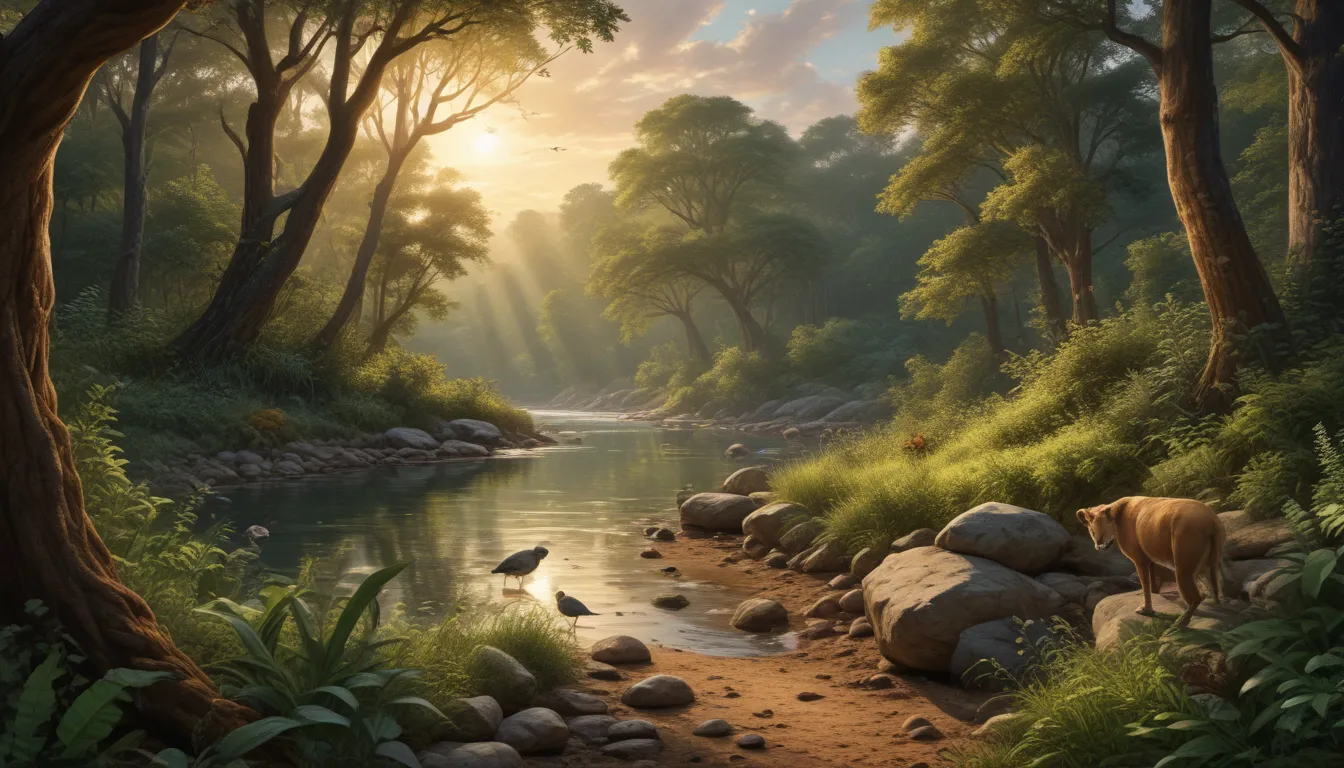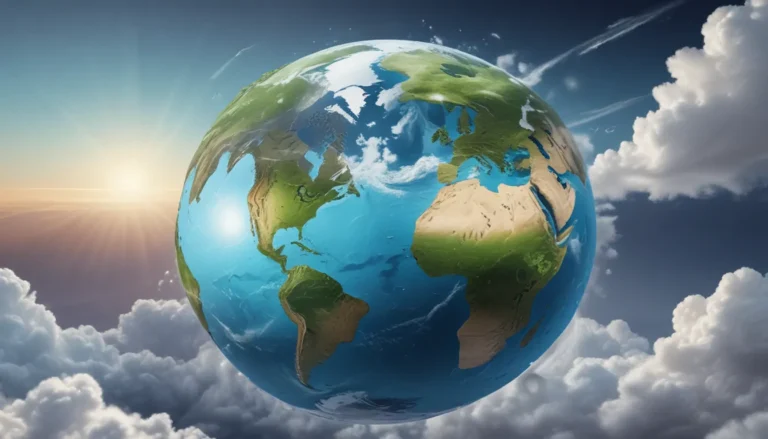A Note About Images: The images used in our articles are for illustration purposes only and may not exactly match the content. They are meant to engage readers, but the text should be relied upon for accurate information.
In our quest to safeguard the environment, conservation strategies emerge as the unsung heroes dedicated to preserving the Earth’s natural wonders. From intricate ecosystems to endangered species, these strategies serve as the guardians of our planet’s biodiversity. While familiar practices like recycling and reducing carbon emissions often take center stage, a realm of intriguing facts about conservation strategies remains unexplored.
Join us on a journey to unearth 12 captivating and lesser-known facts about conservation strategies. These insights not only deepen our appreciation for the complexity of conservation but also illuminate the innovative methods employed to safeguard our precious natural resources. From the fusion of technology to the empowerment of local communities, these strategies evolve continually to confront the challenges of preserving biodiversity.
Conservation Strategies: Empowering Nature’s Protectors
- Conservation strategies serve as the champions of nature, leveraging technology, community engagement, and partnerships to shield biodiversity and combat climate change for a brighter future.
- These strategies evolve perpetually, embracing novel ideas and indigenous wisdom to ensure the longevity of our planet’s diverse ecosystems and the well-being of all living creatures.
Delving into the Essence of Conservation Strategies
Conservation strategies hold pivotal significance in the sustenance of biodiversity. They strive to protect and restore habitats, safeguard endangered species, and advocate for sustainable practices to secure the enduring survival of our planet’s natural diversity.
Embracing Technological Advancements in Conservation
Technology stands as a revolutionary force in the realm of conservation strategies. From satellite imagery and drones for ecosystem monitoring to genetic analysis for tracking endangered species, technology amplifies the efficacy and efficiency of conservation efforts.
Fostering Community Engagement for Conservation Success
The active involvement of local communities forms a cornerstone of successful conservation strategies. By empowering and engaging communities, conservationists foster a sense of ownership and stewardship, leading to enhanced conservation outcomes and habitat protection.
Beyond Borders: The All-Encompassing Nature of Conservation Efforts
While protected areas like national parks and wildlife reserves are crucial for conservation, strategies extend far beyond these demarcated zones. Conservation endeavors encompass privately-owned lands, agricultural terrains, urban ecosystems, and even marine realms.
Tackling Climate Change Through Conservation Strategies
Conservation strategies address the imminent need to combat climate change. By curbing greenhouse gas emissions, endorsing renewable energy sources, and implementing sustainable practices, these strategies aim to alleviate the impact of climate change on ecosystems and biodiversity.
Reviving Degraded Habitats: A Vital Aspect of Conservation
Restoration projects serve as integral components of conservation strategies. Through activities like reforestation, habitat reconstruction, and wetland revitalization, conservationists strive to rejuvenate ecosystems and provide sanctuaries for endangered species.
Embracing Collaboration and Partnerships in Conservation
Conservation emerges as a global endeavor, necessitating collaboration among governments, organizations, communities, and individuals. Through joint efforts, knowledge sharing, and alliance formation, conservation strategies wield a profound influence on preserving the planet’s biodiversity.
Upholding the Web of Life: Conservation Beyond Charismatic Species
While charismatic species often seize the limelight, conservation strategies advocate for the protection of the entire tapestry of life. This includes safeguarding lesser-known species and preserving habitats and ecosystems that sustain biodiversity as a whole.
Harnessing Sustainable Tourism as a Conservation Ally
Sustainable tourism, when managed conscientiously, can serve as an economic catalyst for conservation initiatives. By promoting responsible practices, educating tourists, and supporting local communities, sustainable tourism generates funds for conservation projects and enhances awareness of nature preservation.
Nurturing Human Well-Being Through Conservation
Conservation strategies not only shield biodiversity but also yield broader benefits for human wellness. By safeguarding ecosystems, these strategies ensure the provision of clean air and water, aid in climate regulation, and support livelihoods dependent on natural resources.
Integrating Indigenous Wisdom into Conservation Strategies
Indigenous communities harbor profound insights into their local ecosystems, cultivated over generations of harmonious coexistence with nature. By integrating indigenous knowledge and practices into conservation strategies, efficacy is enhanced while promoting cultural diversity and mutual understanding.
Evolving Horizons: The Dynamic Nature of Conservation Strategies
As our comprehension of the natural world and its challenges expands, conservation strategies evolve incessantly. Conservationists embrace fresh research, innovative technologies, and collaborative approaches to ensure the effectiveness of their endeavors amid ongoing environmental transformations.
Conclusion: A Call to Preserve and Protect
In conclusion, conservation strategies stand as pivotal pillars in the preservation and protection of our environment. Through inventive methodologies and scientific progress, we can profoundly impact the well-being of our planet. From reforestation endeavors to sustainable agricultural practices, conservation strategies proffer tangible solutions to mitigate the adverse effects of human activities on the natural world. By fostering awareness, collaborating with communities, and enacting effective policies, we pave the way towards a sustainable future. Let us embrace the unexpected marvels of conservation strategies and unite in nurturing a healthier and vibrant planet.
Unraveling the Mysteries: FAQs on Conservation Strategies
-
What are conservation strategies?
Conservation strategies encompass methods, approaches, and actions aimed at preserving and protecting the environment and its natural resources. They span diverse practices like habitat restoration, wildlife conservation, sustainable resource management, and pollution control. -
Why are conservation strategies important?
Conservation strategies are crucial for maintaining ecosystem equilibrium, safeguarding biodiversity, and mitigating the negative repercussions of human activities. Effective conservation strategies ensure the enduring sustainability of our natural resources and safeguard the prosperity of future generations. -
What are some examples of conservation strategies?
Examples of conservation strategies encompass creating protected areas, adopting sustainable farming practices, endorsing renewable energy sources, curbing waste generation, and propagating awareness about conservation through educational and outreach initiatives. -
How can individuals contribute to conservation strategies?
Individuals can contribute to conservation strategies by fostering sustainable practices in their daily routines, such as reducing energy and water usage, recycling, utilizing eco-friendly products, supporting local and organic agriculture, and engaging in community conservation efforts. -
What role does technology play in conservation strategies?
Technology assumes a pivotal role in conservation strategies, facilitating research and monitoring of ecosystems, forging innovative solutions, and implementing data-driven approaches. Technologies like remote sensing, DNA analysis, and artificial intelligence revolutionize conservation efforts, enhancing efficacy and efficiency.
Dive into the realm of conservation strategies and witness the remarkable endeavors that shape the future of our planet. Let us unite in our commitment to preserving and protecting the natural world, ensuring a legacy of sustainability for generations to come.






